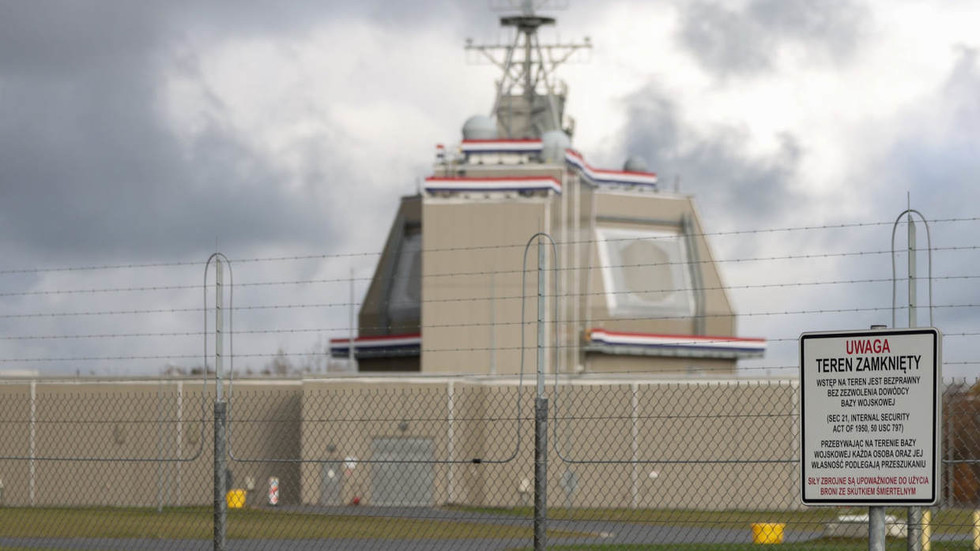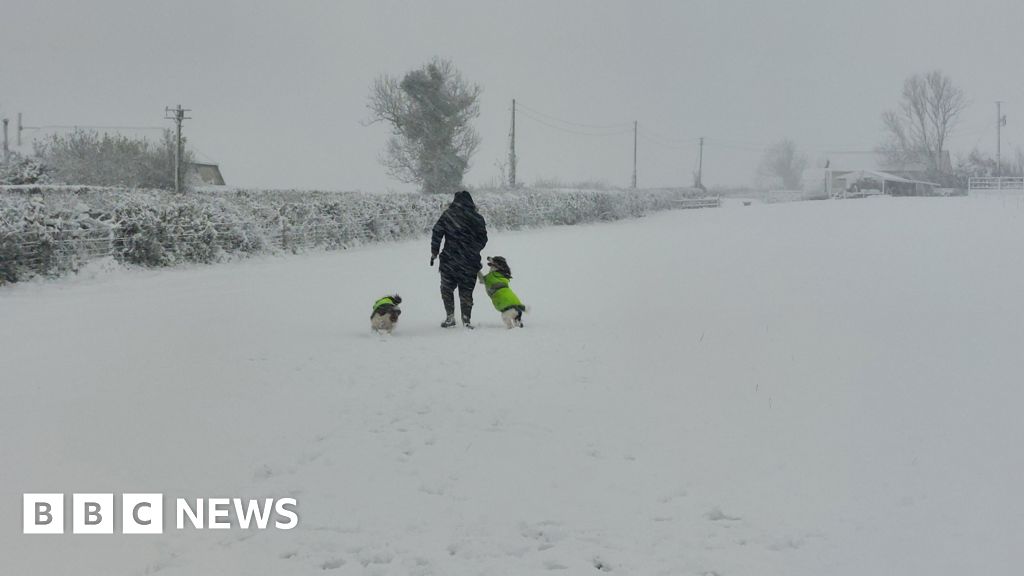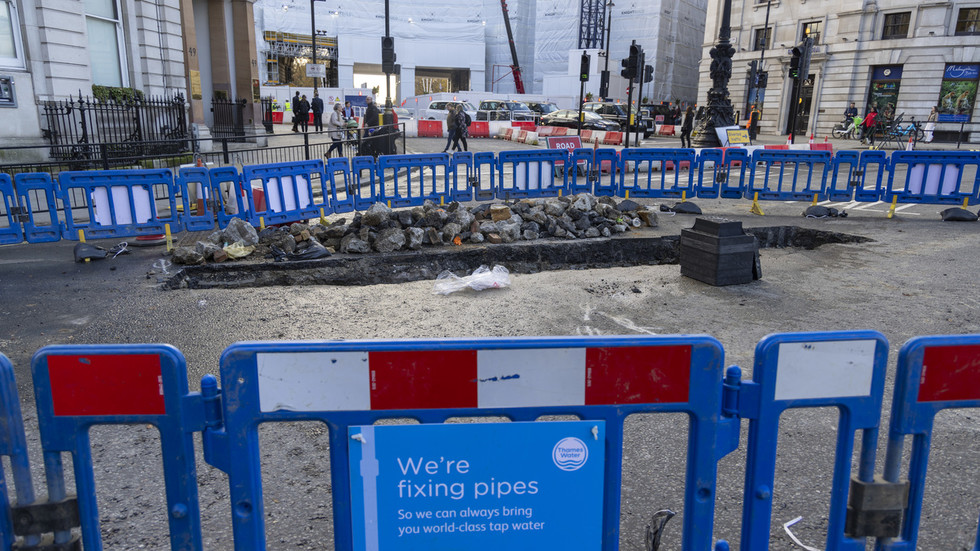 The Imja river in Khumbu region with village in the left, these rivers could experience floods if a GLOF happened. Credit: Tanka Dhakal/IPS
The Imja river in Khumbu region with village in the left, these rivers could experience floods if a GLOF happened. Credit: Tanka Dhakal/IPSKATHMANDU, May 28 (IPS) - In this explainer, IPS looks at GLOFs and the danger they pose to communities when many of the 54,000 glaciers in the Hindu Kush Himalaya (HKH) region are getting smaller due to climate change.
Phu Chhettar Sherpa, who worked as an icefall doctor (a Sherpa who fixes ropes for climbers) for seven years from 2015 to 2021 on Mt. Everest, vividly recalls his fear of possible flash floods after the huge earthquake in Nepal in 2015.
“I was at the Everest base camp when it started shaking, and within moments, dead bodies were in front of my eyes,” Sherpa, who now works as a trekking guide in the region, shared. “After some time, there was fear of possible Glacial Lake Outburst Floods (GLOFs) from the Imja Glacial Lake, and I was thinking about my family downstream. Thankfully, GLOFs didn’t happen.”
Like Sherpa, millions of people who live in the Himalayan and downstream in the Hindu-Kush Himalaya (HKH) region, including Nepal, are at risk of possible flash floods that can be unimaginably destructive within a short span of time if the outburst of potentially dangerous glacier lakes occurs, which can be triggered by earthquakes, avalanches, or the accumulation of excessive amounts of water from melting ice.
So, what exactly are GLOFs?
In general, GLOFs refer to the sudden release of water from a glacier lake, which is formed by meltwater from a mountain glacier (river of ice in the mountains) and is held back by rocks, sediment carried by the glacier, known as moraine, or a combination of ice and moraine.
Scientists with extensive experience in understanding glacier and mountain systems also say, in general terms, GLOFs refer to any flood of water that originates from a lake associated with a glacier.
Dr. Miriam Jackson, Senior Cryosphere Specialist at the International Centre for Integrated Mountain Development (ICIMOD), explained, “The lake can be beside the glacier, in front of it, under it (subglacial), or actually on the glacier (supraglacial).”
She added, “The term is even used when the lake is in a glacier valley, but a few hundred meters from the glacier.”
As climate change affects glaciers, many of them are shrinking, leading to the formation of lakes.
“In the Himalayas, many lakes are formed in front of the glacier and are blocked by a small ridge called a moraine, which is made of material that the glacier pushed forward when it was much larger,” Jackson explained.
What causes the outburst of these lakes?
The main causes of GLOFs are earthquakes, avalanches, and the buildup of water in lakes as a result of glaciers melting quickly. The root cause of these phenomena is the rising temperature, with researchers noting a relatively high impact of climate change in the Himalayas, where glacier melting is occurring at an accelerated pace, leading to the creation of new lakes and the expansion of existing ones.
A research paper published in the Nature in 2023 suggests that glaciers may melt even faster than expected, potentially contributing to sea-level rise at a quicker rate than previously thought. Another study, published in Nature Climate Change in 2020, analyzed more than 250 thousand satellite images, revealing a rapid growth of glacial lakes around the world over the last three decades, indicating the impact of increased meltwater draining from melting glaciers.
Ines Dussaillant, a glaciologist at the World Glacier Monitoring Service who was in the Mt. Everest region in the first week of May, expressed concern about glacier melting in the Himalayan region. She explained, “Because the geography here is more fragile, mixed with ice and moraine, and these newly formed or expanding glacial lakes have weakly formed dams,” She added, “If events like avalanches, earthquakes, or water accumulation exceed the capacity of the dams, outburst floods can occur.”
How can avalanches trigger GLOFs?
In third week of April 2024 Nepal experienced a trigger of Glacial Lake Outburst Floods (GLOFs) as Birendra Lake, a glacial lake in the Gorkha district, flash-flooded downstream communities because of splashed water. This was caused by an avalanche on Mt. Manaslu, which led to a sudden release of water from Birendra Lake and resulted in flooding in the downstream community.
According to Jackson, an avalanche is a sudden fall of material on a steep slope, and could be a snow avalanche, ice avalanche, or rock avalanche.
“Glacial lakes are usually in steep terrain so are prone to avalanches into the lake,” she explained, “An avalanche can trigger a GLOF, either by causing a small displacement of water due to the material landing in the lake (probably the case for the recent GLOF at Birendra Lake), or this could trigger a much bigger event, say by causing moraine collapse.”
Why is the Hindu-Kush Himalaya region important?
Scientists say 54,000 glaciers are in the Hindu Kush Himalaya (HKH) region and almost all of them are getting smaller due to climate change.
“This means that lakes can form (usually beside or in front), and that existing lakes may get bigger,” Jackson said. “The rivers coming down from the high mountains often flow along very narrow valleys. People may live in a valley where a GLOF could occur and not even know about the glacier and lake status as they are so far upstream.”
The floods come down these narrow valleys and may also bring a lot of rock and sediment with them. For example, the GLOF in Sikkim last October caused huge damage, including to a large hydropower facility at Chungthang.
“People should be aware if they live somewhere (or frequently travel) where a GLOF could take place,” Jackson, who is also a scientist for IPCC reports. “If there is an early warning system, then they can support this by making sure it is well-maintained and attend any training offered that is related to it.”
A glacial lake inventory report published in 2020 has identified 47 potentially dangerous glacial lakes (PDGLs) within the Koshi, Gandiaki, and Karnali river basins of Nepal (21 in Nepal), the Tibet Autonomous Region of China (25 in China), and India (one in India). The report says these moraine-dammed glacial lakes are at risk of breaching, which would result in glacial lake outburst floods (GLOFs).
Water level lowering is one way to mitigate potential hazards that may be caused by GLOFs, as has been done in Imja Tsho (Imaja Lake) glacial lake in the Khumbu region. But experts believe the role of local communities is extremely important for reporting potential hazards and any significant changes.
“If they (local people) think there is a danger of a GLOF but there is no early warning system, this should be raised with their local representatives,” Jackson said. “If people are sometimes in high areas where they see glaciers and glacial lakes and see that things are changing (such as the lake getting bigger), then this should be reported as soon as possible.”
This feature is published with the support of Open Society Foundations.
IPS UN Bureau Report
Follow @IPSNewsUNBureau
Follow IPS News UN Bureau on Instagram
© Inter Press Service (2024) — All Rights ReservedOriginal source: Inter Press Service

 5 months ago
24
5 months ago
24









